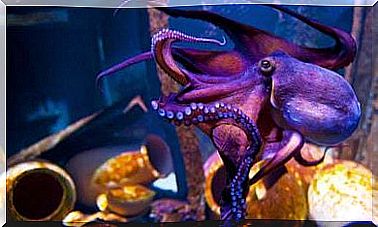5 Truly Amazing Species Of Crabs
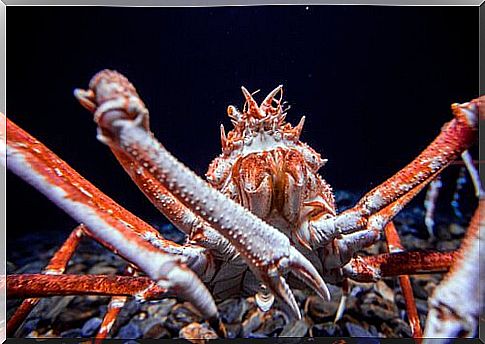
The crabs are aquatic crustaceans with ten legs (Decapoda). It is a family that includes over 4000 species. It is therefore normal that surprising and strange specimens can be found there. We know of them that they walk sideways and live on the seabed. If you love these particular animals and want to know the most amazing species of crabs , don’t miss this article.
The crab species you need to know
Most crab species move around the sea by walking and only a few swim. They have four legs on each side and two front clamps (called “claws”) which are used to capture and manipulate food, fight a rival for the territory or even court females during the breeding season.
Like other arthropods , they are also equipped with an exoskeleton, which they change many times during their life. There are several suborders and species of crabs around the world. Below we will discover six, which we are sure will not leave you indifferent:
1. Giant crab from Japan
It belongs to the group of “spider crabs” with triangular carapace and long legs, and can exceed three meters in length. He lives in the depths of the Pacific Ocean, especially on the Japanese coasts, and although he is blind, he uses the sensitivity of his hair to “feel” the vibrations in the waves of the sea and has a highly developed hearing.
It is believed that the giant crab of Japan – visible in the photo that opens this article – can live about 100 years (70 in captivity) and that its claws have the ability to inject a poisonous liquid, which allows it to defend itself from any predators.
2. Hermit crab
It is not just one type of crab, but it encompasses several species that share the ‘quality’ of using shells to cover and protect the abdomen, like real armor. This is in fact the softest and weakest area of their body. There are around 500 types of hermit crabs, and while most are aquatic, some of them can also live on land.
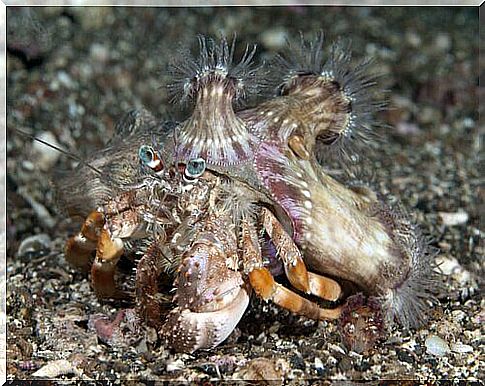
Why do they use shells to hide? Their exoskeleton covers only the front. The most curious aspect of all is that when the crab grows, it is forced to “move” to a larger house and often struggles to snatch the shell it likes best from an opponent.
It feeds on organic remains, although it can also include snails, worms, mussels, larvae and plants mixed with sand in its diet. As for reproduction, the female carries the eggs under the abdomen and, once fertilized, releases them into the sea.
3. Blue crab
Also known as king crab , this crustacean has five pairs of legs. Despite being called “blue,” the exoskeleton that covers it is dark green, although some males have bluish-gray bodies.
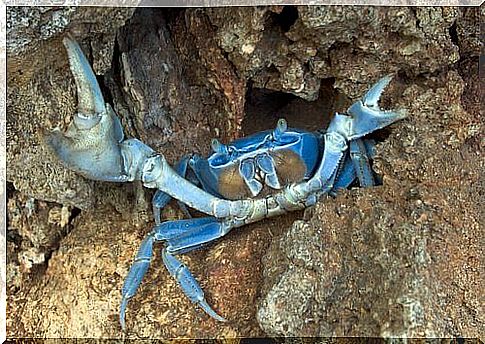
This crab is very voracious and active. It bases its diet on fish, algae, molluscs and crustaceans. It can live up to 8 years and, like the rest of its family, is oviparous. Each spring and summer the female lays 700,000 to 2 million eggs.
It lives in the Atlantic Ocean, from Scotland to Argentina, but especially in the Gulf of Mexico. It prefers tropical coasts, bays, estuaries, river mouths and coastal lagoons no more than two meters deep.
4. Yellow land crab
Scientifically known as Gecarcinus ruricola , this is the most widespread land crab in the Caribbean islands. However, its habitat also extends to Cuba, the Antilles and Barbados. It can live up to 10 years and is a nocturnal animal. He prefers to avoid the dangerous rays of the sun that could dehydrate him. It is an omnivorous animal and its diet is mainly based on the consumption of decaying organic remains (it is said that it is scavenger ).
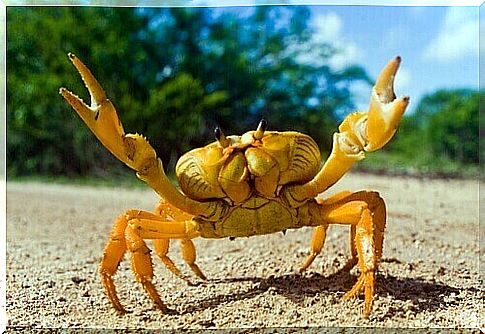
5. Spider crab
Many may confuse this crab with a spider. Except that he is able to swim very well. This crustacean is a close relative of the Japanese giant, which we talked about at the beginning. But only for its triangular shape and long, thin legs.
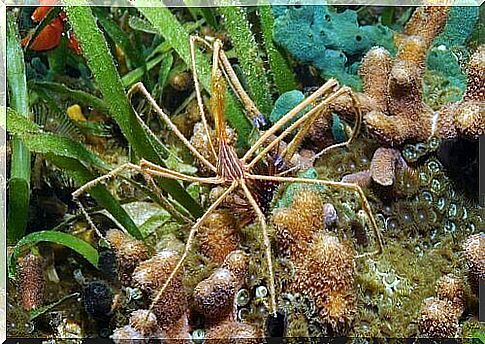
In terms of size, this species reaches only 10 centimeters in width and its body is brown with gray colored claws. It feeds on worms and small crustaceans and lives on cliffs and rocks of the Atlantic Ocean, from the United States to Argentina. It manages to blend in without problems.



